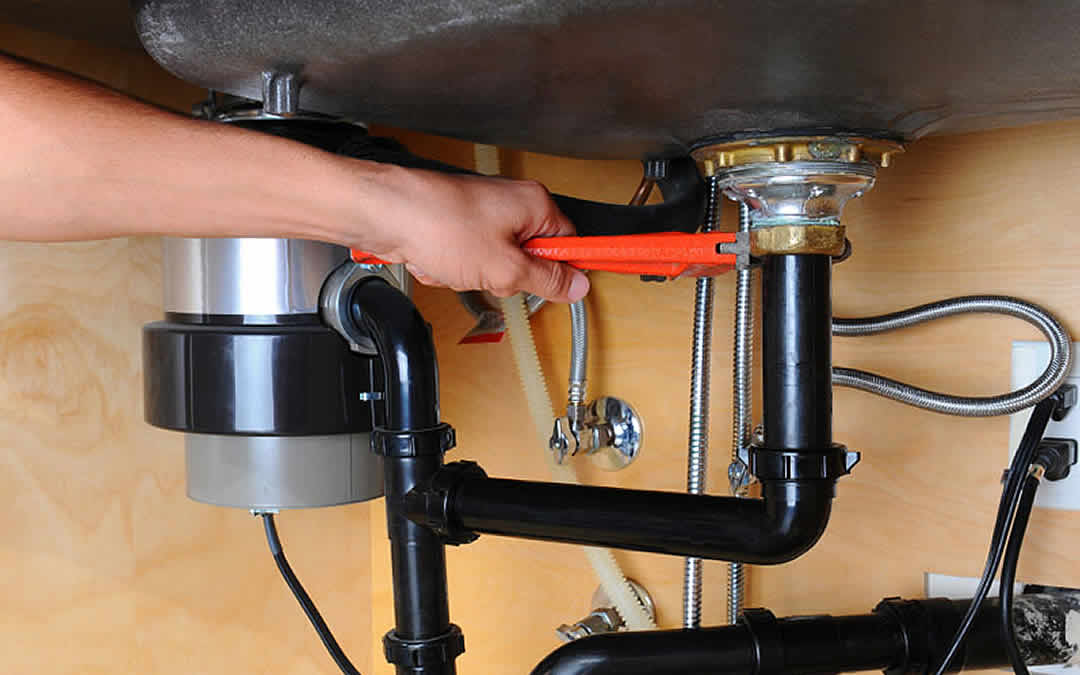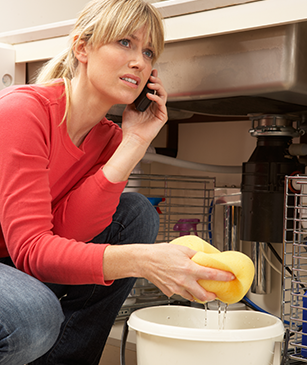The writer is making a few great annotation regarding How to fix a pretty consistent leak from my garbage disposal overall in this great article underneath.

Garbage disposals are essential kitchen area devices that help in throwing away food waste effectively. However, a leaking waste disposal unit can be an aggravating and unpleasant problem to handle. Fortunately, many leaks can be dealt with quickly with a couple of straightforward steps. In this article, we will certainly talk about exactly how to fix a leaking waste disposal unit effectively.
Introduction
Garbage disposals are mounted under cooking area sinks and are made to shred food waste right into smaller pieces, allowing it to pass through the pipes system easily. While these tools are typically dependable, leakages can occur gradually as a result of wear and tear, loose connections, or damage to the system.
Typical Root Causes Of Leakages in Garbage Disposals
Worn Seals and Gaskets
Seals and gaskets play an important function in avoiding water from leaking out of the waste disposal unit. With time, these parts can degrade, causing leaks around the disposal unit.
Loose Links
The links between the garbage disposal and the plumbing system can become loose with time, causing water to leak out throughout operation.
Splits or Holes in the Disposal Device
Physical damage to the waste disposal unit, such as fractures or openings in the housing, can additionally result in leakages.
Identifying the Resource of the Leakage
Before trying to fix a leaking garbage disposal, it is necessary to determine the source of the leak. This can generally be done through aesthetic evaluation or by conducting easy examinations.
Visual Evaluation
Inspect the waste disposal unit unit meticulously for any type of indicators of water leak. Pay very close attention to areas around seals, gaskets, and connection points.
Examining for Leaks
One method to check for leakages is by running water through the disposal device and looking for any type of visible indicators of leak.
Tools and Products Needed for Taking Care Of a Leaking Waste Disposal Unit
Before starting the fixing process, collect the essential tools and products, including a screwdriver, adjustable wrench, plumbing's putty, replacement seals or gaskets, and epoxy or patching product for fixing fractures or openings.
Step-by-Step Guide to Fixing a Dripping Garbage Disposal
Shut off the Power
Before attempting any type of fixings, make sure that the power to the waste disposal unit unit is shut off to avoid the danger of electrical shock.
Situate the Leakage
Determine the precise location of the leakage and figure out the cause.
Tighten up Connections
Use a wrench to tighten up any loosened connections in between the disposal system and the pipes system.
Replace Seals or Gaskets
If the leakage is because of used seals or gaskets, remove the old parts and replace them with brand-new ones.
Patching Splits or Holes
For splits or holes in the disposal unit, usage epoxy or an appropriate patching product to secure the broken location.
Testing the Waste Disposal Unit After Repair Service
When the repair work is total, test the garbage disposal by running water via it to ensure that the leak has been settled.
Preventive Upkeep Tips to Stay Clear Of Future Leaks
To stop future leakages, it is important to do normal maintenance on your garbage disposal. This includes maintaining it clean, staying clear of putting non-food items or hard objects down the disposal, and occasionally looking for leakages or various other problems.
Final thought
To conclude, taking care of a dripping waste disposal unit is a reasonably uncomplicated process that can be completed with standard tools and materials. By complying with the actions laid out in this write-up and exercising preventative upkeep, you can maintain your waste disposal unit in good working problem and prevent costly repairs in the future.
What to Do About a Leaking Garbage Disposal
A leaking garbage disposal often goes unnoticed until you confront a sopping cabinet, a foul-smelling puddle, or an audible drip-drip-drip from the unit. The fix can be frustrating, too, because the leak can stem from a number of components in the system. Fortunately, with a little sleuthing, you can zero in on the leak and—depending on the exact location—stop the icky oozing and repair the component that caused it. Worst case scenario, if it turns out that the garbage disposal must be replaced, installing a new one is a reasonable do-it-yourself task for those with basic plumbing skills. Read on to keep the cash you’d otherwise hand over to a pro.
Prepare to find the leak
Prior to testing the garbage disposal for leaks, unplug it at the wall outlet and turn off the power from the breaker box to prevent electrical shock. Then insert a watertight sink stopper into your sink drain and wipe the unit dry with a clean cloth. In any handy container, mix a few drops of food coloring into a few cups of water, and pour the dyed water onto the sink stopper to help you locate the leak.
Investigate the source
the top, where the disposal meets the sink drain the side, where the dishwasher hose or main drain pipe connects to the disposal or the bottom of the unit Inspect each of these locations while gliding a light-colored rag over the unit; the dyed water will readily show on the rag and reveal the location of the leak. If a leak isn’t immediately apparent, remove the sink stopper and pour a few more cups of dyed water down the sink drain, then check for leaks again. Leaks near the top of the unit are more likely to show themselves while the sink is plugged, while side and bottom leaks are more noticeable while the sink is unplugged.
The metal sink flange that sits directly inside the sink drain is typically sealed around the top with plumber’s putty (a clay-like sealant) and then secured from under the sink with bolts. If the plumber’s putty deteriorates, or the bolts loosen, the flange can no longer form a watertight seal between the sink drain and the disposal—which could cause a leak at the top of the unit.
To reseal the leaky flange, you must first detach the garbage disposal. Start by loosening the screws securing the main drain pipe to the disposal, then loosen the screws in the metal clamp securing the dishwasher hose to the disposal and detach the drain pipe and dishwasher hose from the disposal. Loosen the screws in the mounting ring that connects the disposal to the metal mounting assembly beneath the sink, then pull down the disposal and carefully set it on a clean, dry surface. Loosen the bolts in the mounting assembly with a wrench, then pull down the mounting assembly and set it near the disposal.

I came across that review about Why Is while surfing the internet. For those who liked our blog posting plz don't forget to share it. I take joy in reading our article about How to fix a pretty consistent leak from my garbage disposal.
Call Today